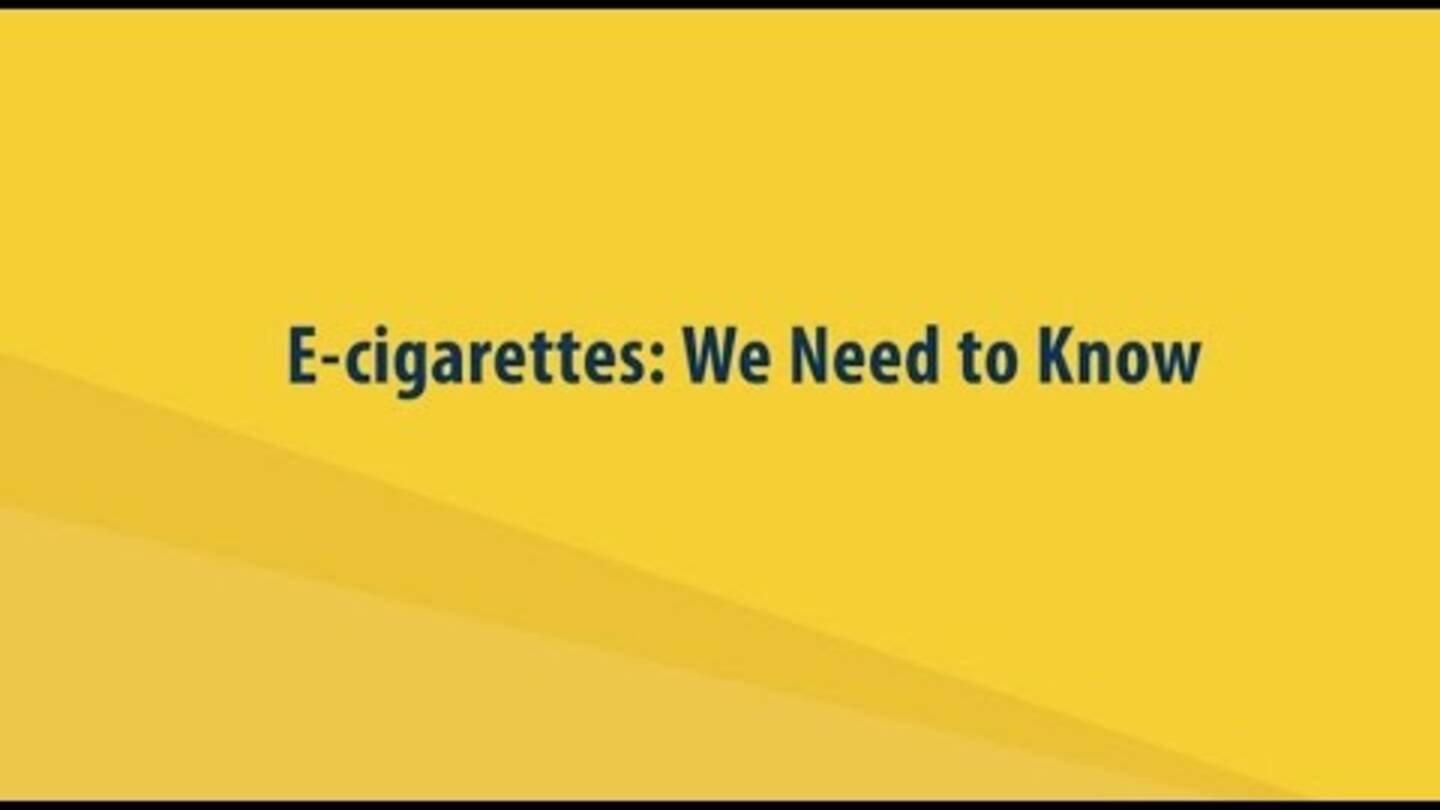Grounding an emerging health issue in scientific evidence
Objective:
To use research to provide a scientific perspective on e-cigarettes, especially secondhand exposure.
Approach:
We studied the composition of e-cigarette emissions, including non-user exposure to these compounds.
Impact:
Our research laid the groundwork for a better understanding of the potential effects of e-cigarette use through secondhand exposure.
In the decades of research on the health hazards of conventional cigarettes, a major milestone was the finding that secondhand exposure to cigarette smoke can harm nonsmokers. Even if smokers open their car windows, install filters to try to clear the air in their homes, or sit in a different section of a restaurant, they still create a health hazard for nonsmokers around them. Governments responded to this newly discovered public health threat by passing clean indoor air laws and people became less tolerant of smoking around nonsmokers, especially children. All of this played a part in reducing cigarette smoking over the past 50 years.
Electronic cigarettes were introduced in the United States in the mid-2000s, amid this new social context of historically low rates of traditional cigarette smoking and widespread clean indoor air policies. Websites selling e-cigarettes marketed them as healthier, cheaper, and cleaner than traditional cigarettes. Some messages encouraged smokers to use them to get around clean indoor air laws and other policies that limit smoking in public areas and workplaces, or made claims that e-cigarettes could be used to quit smoking.
But these marketing messages ignored the fact that research has not yet shown how harmful e-cigarette emissions—often called “vapor”—might be to users, not to mention their possible secondhand effects. E-cigarettes have only recently been subject to regulation by the U.S. Food and Drug Administration, and they continue to be available in a wide variety of designs and flavors.
To cut through the hype, RTI experts in aerosol science and public health designed and conducted research to provide a scientific perspective on e-cigarettes, especially secondhand exposure.
Multidisciplinary Research Reveals Insights into Potentially Hazardous Particles in E-Cigarette Vapor
In a 2015 research brief titled “Exhaled Electronic Cigarette Emissions: What’s Your Secondhand Exposure?” we reported key findings on the composition of e-cigarette emissions, which typically contain nicotine, glycerin and glycols, artificial flavorings, and preservatives. These ingredients spread through the air as tiny particles, many of which are smaller than 1,000 nanometers—comparable to the size of particles of smoke from cigarettes and diesel engines. Non-users can be exposed to these compounds by inhaling the air around an e-cigarette user or by coming into contact with residue left behind on surfaces and fabrics. We noted that the scientific understanding of the health effects of e-cigarettes is early and emerging, and work on secondhand exposures is just beginning.
Laying the Groundwork for Future Studies of the Health Effects of E-Cigarettes
It took many years of research to assess the broad range of health effects of traditional tobacco cigarettes. A parallel assessment of the health effects of e-cigarettes, especially flavorings and preservatives, may prove equally or even more complex. Our research brief laid the groundwork for a better understanding of the potential effects of e-cigarette use through secondhand exposure.
We provided the scientific community with important considerations for analyzing secondhand e-cigarette emissions. Our research brief outlined several recommendations that could improve e-cigarette research, including new standards for lab testing across multiple types of e-cigarettes and examining the different ways in which people use them.
With the e-cigarette business booming and the FDA implementing new regulations of e-cigarettes, these devices are poised to make an even greater impact on health, business, and public policy in the United States.
- RTI Funded

